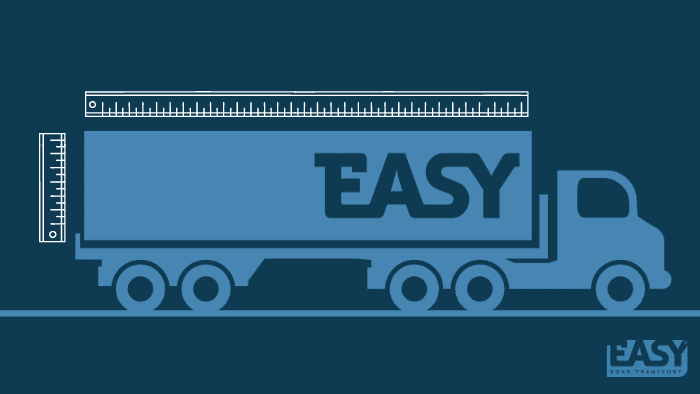
How do you calculate a Loading Gauge (LDG)?
In the transport industry, we don’t talk about actual meters. Instead, we use Loading Gauges (LDG). This is a different metric, that is adjusted to the truck and its capacity. For our truckers and planners, this is daily business, so they know quite well how to work with these gauges. I can imagine for you as an importer or exporter, this does not come as natural. Yet, you do need this information if you want to export a pallet or a different sized load.
This blog will help you define loading gauges and understand how to calculate them!
How do I calculate a Loading gauge
Loading gauges are calculated based on the size of the actual goods or pallet, which is then multiplied by a coefficient that takes into account the truck’s capacity. Loading gauges are important for freight that cannot be stacked. By calculating the loading gauge, a freight forwarder can make up for the lost space above the freight that cannot be used. Loading meters are therefore super helpful in maximising the capacity of a truck.

Never forget a holiday abroad again
Do you also get confused with all holidays across borders? This holiday calendar helps you to never forget a holiday again! Make your transports EASY!
So how do we calculate a loading gauge? To do this, we take the following formula:
Length of the good X width of the good / width of the truck
As a default, we take a truck width of 2,4 gauges.
Loading gauge calculation: An example
A pallet of goods is 0.80 meter X 1.20 meter. This means we multiply 0,80 X 1,20 = 9.600 divided by 2,40 gives 0,4 loading gauges.

Loading gauge calculation tool
Of course, you can always calculate this manually. The calculation tool below makes it a little easier for you! Enter the floor length and width of your goods in centimetres. The tool will immediately give you the number of load gauges of your goods.
Why is calculating a loading gauge important?
Within our industry, the term loading gauge is common. It is used as a unit of account for a load that should not be stacked and where nothing should be on top. In doing so, it sometimes happens that space is “lost”. This is a waste! After all, you want to maximise the truck’s capacity. That is why we calculate load gauges and thus the maximum pallet load.
Standard sizes
The most common types of pallets have fixed sizes. A euro pallet is standard 0.4 load metres and a block pallet is standard 0.5 load metres.
Is there a weight limit to a loading gauge?
There are maximums for how much can be carried in each loading gauge, though! These vary depending on the vehicle type, and can be up to a maximum of 30 tonnes per loading gauge. For a standard truck, the maximum capacity is 1.750 Kg per loading gauge.

Calculate your transport costs in under 2 minutes!
Do you want to know the costs of transporting your goods from A to B? The price calculator lets you calculate your transport costs. No more surprises for you!
How many pallets fit into a truck?
This will largely depend on the size of your pallet and the dimensions of your truck. A standard truck will have a capacity of 13,50 loading gauges. Most trucks can therefore hold around 33 pallets, however this varies depending on the type of truck and its loading capacity.
It is good to consider that there are different sizes in pallets. The most common sizes are mini pallets (80×60), euro pallets (80×120) and block pallets (100×120). Mini pallets are 0,2 loading gauges, euro pallets are 0,4 loading gauges, and block pallets are 0,5 loading gauges.
What is the payload of a truck?
Gross payload
To calculate the gross payload, subtract the weight of the chassis (the undercarriage) from the total permissible weight of the truck. The weight of the chassis can be found in the corresponding specification sheets.
Net payload
The net payload is the gross payload minus the kerb weight. You will also find this net payload on a registration certificate under, surprisingly, “payload”.
An overview of all maximum weights and dimensions of different vehicles is shared via the Dutch RDW.